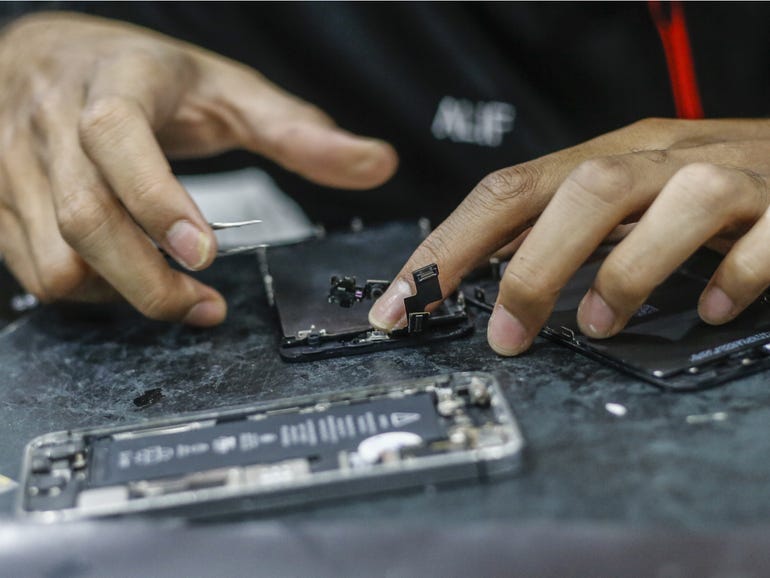
Got an Apple device — iPhone, iPad, AirPods, a Mac, or maybe even a charger — that’s misbehaving or stopped working? Before you buy a new one or pay for a repair, it might be worth checking to see if the device is covered by one of Apple’s service programs.
Currently, Apple has 21 special service programs in place to cover issues resulting from manufacturing issues.
Here’s a current list as of the time of writing:
Apple has determined that some iPhone 12 or iPhone 12 Pro handsets manufactured between October 2020 and April 2021 suffer from a manufacturing issue that means that there’s no sound emitted from the receiver when you make or receive call.
Has the display of your iPhone 11 stopped responding? Apple has identified that devices manufactured between November 2019 and May 2020 may have an issue related to the display module.
Do your AirPods Pro crackle when in use? Apple has identified this as a problem affecting some earbuds and has kicked off a replacement program for affected devices.
If the screen on your iPad Air (3rd generation) has gone blank (with perhaps a brief flicker or flash that may appear before the screen goes blank) and was manufactured between March 2019 and October 2019, these are eligible for a free of charge fix.
Some Smart Battery Cases made for iPhone XS, iPhone XS Max, and iPhone XR may experience charging issues, such as not charging or charging intermittently when plugged into power, or won’t charge the iPhone or only does so intermittently.
iPhone 6s and iPhone 6s Plus not powering on? If it was manufactured between October 2018 to August 2019, then it might be eligible for a free fix.
If a crack has formed along the rounded edge of the screen of the aluminum models of an Apple Watch Series 2 or Series 3, this could be as a result of a defect that Apple is aware of.
Apple has identified that some MacBook Pro (Retina, 15-inch, Mid 2015) laptops sold between September 2015 and February 2017 may overheat and pose a fire safety risk.
Apple recommends users check their serial number against the database of affected devices, and if theirs is one of the affected units to stop using it and seek a free battery replacement.
This is a program that covers keyboard issues such as stuck, repeating, or malfunctioning keys on MacBook, MacBook Air, or MacBook Pro keyboards.
It covers the following devices:
- MacBook (Retina, 12-inch, Early 2015)
- MacBook (Retina, 12-inch, Early 2016)
- MacBook (Retina, 12-inch, 2017)
- MacBook Air (Retina, 13-inch, 2018)
- MacBook Pro (13-inch, 2016, Two Thunderbolt 3 Ports)
- MacBook Pro (13-inch, 2017, Two Thunderbolt 3 Ports)
- MacBook Pro (13-inch, 2016, Four Thunderbolt 3 Ports)
- MacBook Pro (13-inch, 2017, Four Thunderbolt 3 Ports)
- MacBook Pro (15-inch, 2016)
- MacBook Pro (15-inch, 2017)
- MacBook Pro (13-inch, 2018, Four Thunderbolt 3 Ports)
- MacBook Pro (15-inch, 2018)
- MacBook Pro (13-inch, 2019, Four Thunderbolt 3 Ports)
- MacBook Pro (15-inch, 2019)
According to Apple, a small percentage of 13-inch MacBook Pro may experience display issues:
- Display backlight continuously or intermittently shows vertical bright areas along the entire bottom of the screen
- Display backlight stops working completely
Affected devices were sold between October 2016 and February 2018.
Some three-prong UK/Singapore AC wall plugs shipped between 2003 to 2010 with Macs and some iOS devices, and also included in the Apple World Travel Adapter Kit, may break and become a shock hazard.
Some 128GB and 256GB solid-state drives (SSD) used in 13-inch MacBook Pro (non Touch Bar) laptops may be defective and result in data loss.
Some iPhone X displays may experience touch issues due to a component defect, resulting in either the display not responding to touch or responding as though it was touched when it wasn’t.
This relates to faulty batteries that can cause the battery to expand and is limited to laptops sold between October 2016 and October 2017. Although this sounds dramatic, according to Apple, it is not a safety issue.
A logic board failure can cause some iPhone 7 handsets to display “No Service”, even if in cellular coverage. This affects iPhones sold between September 2016 and February 2018 in China, Hong Kong, Japan, Macao, and the U.S.
This is odd because it covers display flickering or Multi-Touch issues after the iPhone has been dropped multiple times on a hard surface. If your device fits the bill, and the device isn’t broken, or the screen cracked, Apple will carry out a repair for $149.
Some two-prong AC wall plugs were designed for use in Continental Europe, Australia, New Zealand, Korea, Argentina and Brazil and sold between 2003 to 2015 with Macs, selected iOS devices. Apple’s World Travel Adapter Kit may break and be a shock hazard.
This relates to Beats Pill XL Speakers sold since January 2014. It appears the speaker may overheat and pose a fire safety risk. Apple is recalling these in exchange for Apple Store credit or electronic payment of $325 (or local equivalent).
This adapter, which was sold with the iPhone 3GS, iPhone 4 and iPhone 4S models shipped between October 2009 to September 2012, has been shown to overheat and pose a safety risk.
This allows you to take counterfeit (or, for that matter, any third-party charger) iPhone, iPad, and iPod adapters to Apple and buy a genuine charger for the special price of $10.
This relates to the ultracompact Apple USB power adapter shipped with the iPhone 3GS in the US, Japan, Canada, Mexico, and several Latin American countries. It seems the metal prongs can break off in the wall socket, posing a serious shock risk.
